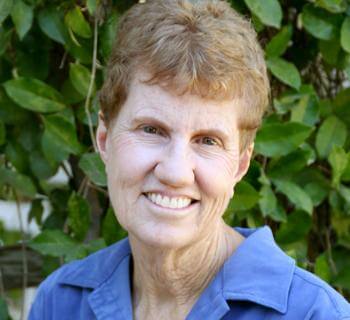
Jane Roberts is a former educator and tennis coach and a lifelong champion of UNFPA, gender equality, and reproductive health access. She founded the organization 34 Million Friends of UNFPA, which aims to educate Americans on global reproductive health issues and to mobilize support for UNFPA. Jane also authored the book 34 Million Friends of the Women of the World. She spoke with USA for UNFPA about the legacy of her work and what we can all do this International Women’s Day to support women and girls around the world.
Interview edited for clarity and brevity.
Dana Kirkegaard (DK): Hi Jane! Thank you for meeting with me. Would you tell us about yourself and how you became interested in UNFPA’s work?
Jane Roberts (JR): I have been a huge champion of gender equality and especially reproductive health for most of my adult life, and since I’m 79, that’s lots and lots of years. After I retired from teaching both French and tennis in 1998, I joined the PLANET campaign sponsored by Hewlett-Packard which was urging Americans to support international family planning and all that reproductive health entails. I flew to Washington D.C. for a meeting of like-minded people around the country. One of the speakers was Abubakar Dungus, who was the Chief of Communications at UNFPA at the time. Quite simply I was hooked.
DK: Do you feel that U.S. support for UNFPA has grown stronger over time?
JR: So, in 2002 when President George W. Bush refused to release the $34 million Congress had approved for UNFPA. My idea was to get 34 million people to give a dollar to UNFPA instead. A certain Lois Abraham had the exact same idea. Thus was born 34 Million USA for UNFPA, which still exists although not with the same explosive force as in the early days. I love to give my $3,400 every year now to encourage former and new donors to chip in their dollar or more for International Women’s Day.
DK: Why do you think it’s so important to support UNFPA?
JR: Personally, I received a good education. I was healthy. My husband and I fell in love and used family planning. I wasn’t afraid of dying in childbirth. I never suffered gender-based violence in any of its myriad forms. No woman should have to experience those things. Education and health are the backbone of gender equality and UNFPA’s work. I saw this first hand in Senegal and Mali when I visited UNFPA clinics there.
DK: International Women’s Day is both a moment of recognition for women’s achievements, but it is also a time to reflect on how we all –governments, institutions, and individuals- can create gender-equitable spaces. Who is someone you feel is making a difference on International Women’s Day?
JR: Stacey Abrams! She is a woman who saw a need, who is educated and articulate, and who has made herself into the champion of the right to vote and the champion of free and fair elections nationwide. She is a woman with a cause and who went for it!